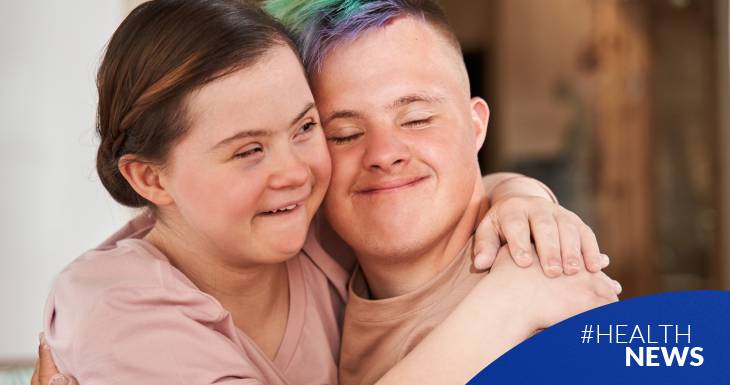Down syndrome is not a disease; It is a condition resulting from a genetic alteration caused by the presence of 47 chromosomes, instead of the usual 46. It occurs when a person has an extra copy of chromosome 21, which results in distinctive physical characteristics and intellectual disability.
The estimated incidence of Down syndrome worldwide is between 1 in 1,000 and 1 in 1,100 newborns.
The estimated incidence of Down syndrome worldwide is between 1 in 1,000 and 1 in 1,100 newborns.
- Trisomy 21: The most common form of Down syndrome, about 95% of cases, is caused by trisomy 21, where there is a complete extra copy of chromosome 21 in every cell in the body. This condition is due to an error during cell division called nondisjunction, which occurs during the formation of eggs or sperm. When an egg or sperm with an extra copy of chromosome 21 joins with a normal egg or sperm, the resulting embryo will have three copies of this chromosome instead of the usual two.
- Robertsonian translocation: About 4% of cases of Down syndrome are caused by a Robertsonian translocation, a type of chromosomal rearrangement. In this case, a part of chromosome 21 is attached to another chromosome, usually chromosome 14. As a result, the individual has two normal copies of chromosome 21, but also an extra copy attached to another chromosome. The Robertsonian translocation can be inherited from a parent who has the chromosomal rearrangement, or it can occur in the affected individual.
- Mosaicism: In about 1% of Down syndrome cases, it occurs as mosaicism, where some cells in the body have an extra copy of chromosome 21, while others have the normal number. This mosaic of cells may be due to an error during early cell divisions after conception. People with mosaicism may have variability in the severity of symptoms associated with Down syndrome, depending on the percentage of cells affected.
The importance of inclusion in education, employment, culture and sport:
Care for people with this condition focuses on helping them develop their maximum potential, through language, occupational and physical therapies, in order to contribute to the educational, labor and social inclusion of this sector of the population.
The inclusion of people with Down syndrome in society has seen significant progress in recent decades, with greater recognition of the diversity and unique abilities of these people, which has led to a global push towards inclusion in a variety of areas, including education, employment, culture and sport.
In the educational field, the inclusion of students with Down syndrome in regular schools is increasingly promoted, where they can learn and socialize with their peers without disabilities. Inclusive education programs have been developed that offer support and resources adapted to the individual needs of students with Down syndrome, encouraging their active participation and their academic and social development. The greatest challenges are in achieving truly open and inclusive schools so that education adapts to each student, with modalities that are useful for each child, with their strengths and weaknesses.
In the workplace, barriers are being broken down and more companies are recognizing the value and skills that these people can bring to the workplace, and are implementing inclusive hiring policies and training programs to ensure their success in employment. In addition, entrepreneurship and self-employment opportunities are being created for people with Down syndrome, allowing them to develop their skills and contribute economically to society.
In the cultural and sports field they are gaining visibility and recognition for their achievements and talents. Inclusive cultural and sports activities are being promoted that provide opportunities for these people to participate and excel in areas such as art, music, theater, dance and sports. This not only allows them to express themselves and develop their skills, but also helps change perceptions and stereotypes about Down syndrome in society.
Why is March 21st commemorated?
The choice of the date of this anniversary is due to the genetic division process called Trisomy 21. The 21st day of the 3rd month is used to symbolize this trisomy.
At the end of the 19th century, the English doctor John Langdon Down was the first to discover the common characteristics of this genetic condition, naming it with his surname. French geneticist Jérome Lejeune discovered in the 1950s that Down syndrome was caused by an extra chromosome.
Every March 21, the world requests a greater commitment from governments, organizations and society as a whole to eliminate barriers and prejudices, promote equal opportunities and guarantee the full exercise of the rights of these people. With a continued focus on education, awareness and affirmative action, we can continue to move towards a more inclusive and diverse society for all.


